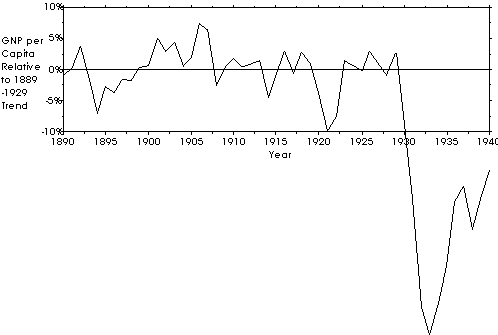| In class, I have tried to make the case that the classical
model had a very hard time explaining the Great Depression and providing
helpful policy solutions. In the classical model, such a sustained decline
in output can only be the result of a massive leftward shift of the labor
demand curve or the labor supply curve, caused by a change in work preferences,
technology, or labor market incentives. There were certainly changes
in policy that were unhelpful to businesses, and could have induced a leftward
shift in the labor demand curve. But the fact that real wages rose during
the early years of the depression (the nominal price level fell by more
than the nominal wage level) implies that a classical economist must predict
at least as large a leftward shift in the labor supply curve. I have a
very hard time identifying any plausible causes of such a large leftward
shift in the labor supply curve, especially as I have to think also of
a mechanism that could keep the labor supply curve shifted to the left
for so many years.In fact, classical economists had an equally hard time,
The Classical Economist's Experience, below, presents a list of
quotes and headlines from some of the foremost economists of the 1920s. |

